#Callorhinus ursinus
Note
Begging you for some pinnipeds any pinnipeds please
Piebald Northern fur seal
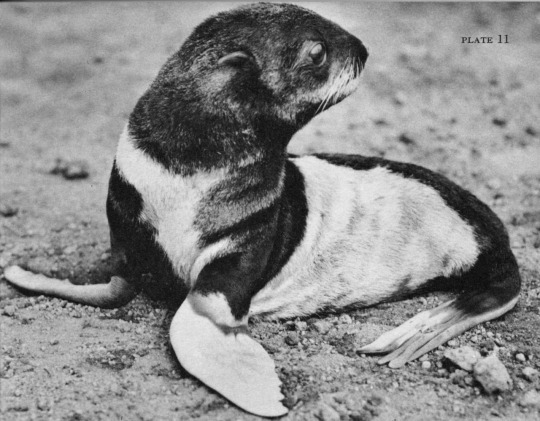
Atypical colored Antarctic fur seal! With the orange, white, and grey they look calico.
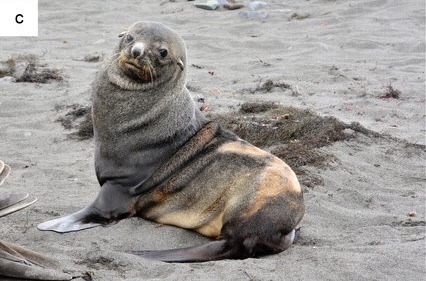
Leucistic Antarctic fur seal

Interesting gang of Antarctic fur seal, one is leucistic and one almost looks brindle?

Leucistic southern elephant seal

Northern fur seal labeled as albino and partial albino (leucistic?) by some sources. NOAA says albino and they are experts.

Albino harbor seal
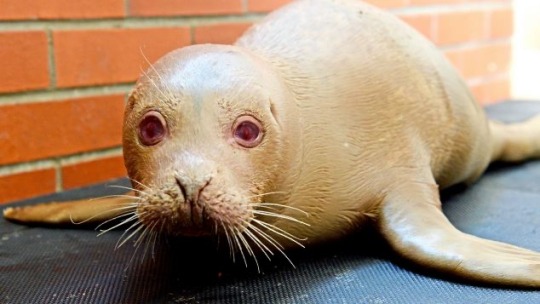
Albino ringed seal
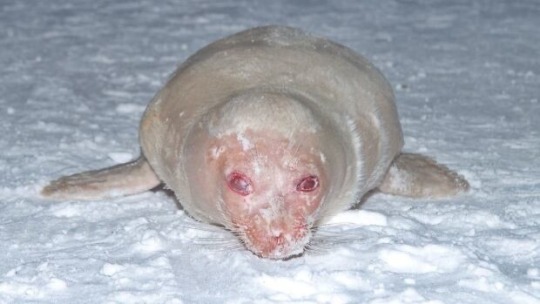
Melanistic grey seal
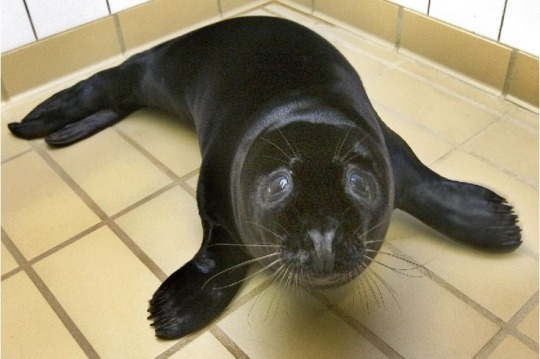
#color mutation#albino#albanisim#melanistic#melanism#piebald#leucism#leucistic#oddball#northern fur seal#Callorhinus ursinus#antarctic fur seal#Arctocephalus gazella#harbor seal#Phoca vitulina#ringed seal#Pusa hispida#southern elephant seal#Mirounga leonina#grey seal#Halichoerus grypus#ask
626 notes
·
View notes
Text
Sexual interactions between Northern Fur Seals and California sea lions (Zalophus californianus) also occur, and male Northern Fur Seals have also been known to attempt forcible copulation with pups of their own species.
"Biological Exuberance: Animal Homosexuality and Natural Diversity" - Bruce Bagemihl
#book quote#biological exuberance#bruce bagemihl#nonfiction#northern fur seal#callorhinus ursinus#california sea lion#zalophus californianus#rape
0 notes
Text
During the breeding season, females of each of these species aggregate into groups among which a smaller number of males are distributed.
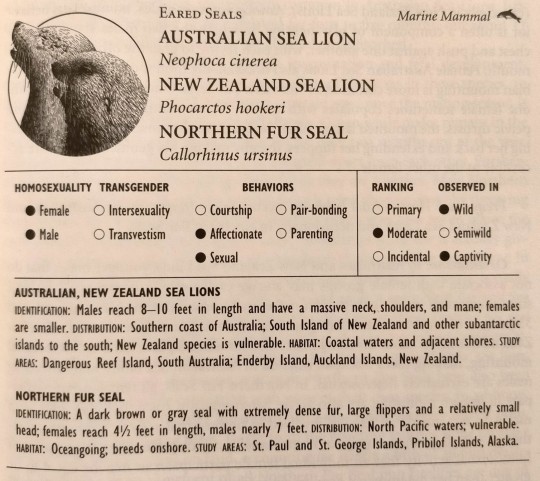
"Biological Exuberance: Animal Homosexuality and Natural Diversity" - Bruce Bagemihl
#book quotes#biological exuberance#bruce bagemihl#nonfiction#australian sea lion#neophoca cinerea#new zealand sea lion#phocarctos hookeri#northern fur seal#callorhinus ursinus#breeding season
0 notes
Photo


伊豆・三津シーパラダイスの個体!!そこの自然っぽい感じもいいけど、泳いでるところを横から見られるのは素晴らしいですね。
たまにこうやってまん丸な目を向けられたけど、こっち見てんのかな。真っ黒な大きい目が深海ザメみたいでした(褒めてるよ)
@浅虫水族館
22 notes
·
View notes
Photo
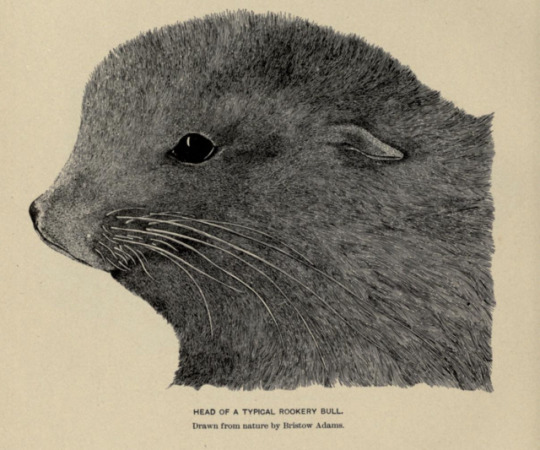
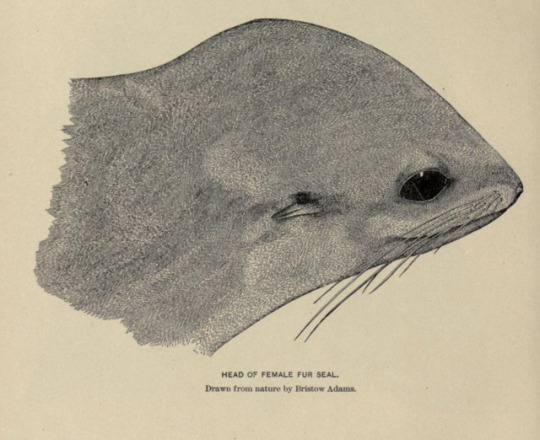


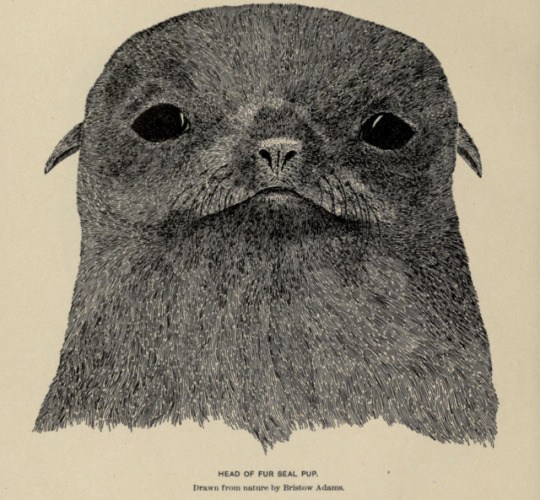
Illustrations of fur seals from 1898 by the by U.S. Coast and Geodetic Survey
See these animals today at the New England Aquarium!
96 notes
·
View notes
Photo

Northern fur seal (Callorhinus ursinus) pups gather on a beach on Bogoslof Island, Alaska, in August. The seals are thriving on the island, which is the tip of an active undersea volcano and features hot mud, steam and sulphurous gases spitting from vents.
Photograph: Maggie Mooney-Seus/NOAA/AP
125 notes
·
View notes
Video
youtube
Newport, Oregon—Today the Oregon Coast Aquarium successfully released the young northern fur seal (Callorhinus ursinus) injured by entanglement in a plastic string.

Aquarium staff and Jim Rice, Stranding Coordinator for the Oregon Marine Mammal Stranding Network (OMMSN) brought the pup to Quarry Cove in the Yaquina Head Outstanding Natural Area for the release.

Excitement and anticipation filled the air as the seal tentatively peered out of its carrier before heading toward the water. He drifted in the protected surf for a while, clearly at ease, while he groomed his fur and swam around. Staff cheered when he crossed the wave-break back into the open ocean.
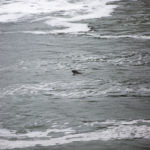
The seal pup made it safely into the open ocean.
127 notes
·
View notes
Note
Are There Any Gay Fish/Aquatic Animals? I Know Clownfish are Technically Trans, but That's The Only LGBT Rep I've Heard of in the Ocean.
Clownfish are not “technically” trans and I think you have a misunderstanding of what transgender means. Transgender just means someone who is a different gender to the one they were incorrectly assigned at birth, therefore no animal is transgender because no animals are assigned a gender at birth or adhere to a gender binary like humans do.
Clownfish are actually sequential hermaphrodites otherwise known more recently in humans as intersex.
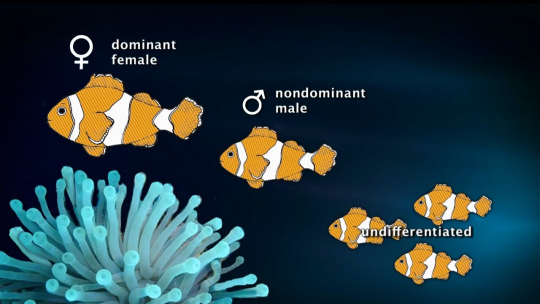
As for homosexual behaviour in fish and marine animals, there’s quite a few! Not as big of a list as terrestrial mammals and birds but this is more to due with it being easier to observe the behaviour in them verses in marine animals.
Observed Homosexual behaviour in Fish
There is a few species of fish in which homosexual behaviour has been observed.
Green Swordtail (Xiphophorus hellerii)
Three-spined stickleback (Gasterosteus aculeatus)
Blackstripe Topminnow (Fundulus notatus)
Amazon Molly (Poecilia formosa)
This fish reproduce through gynogenesis meaning that this species of fish consist on only females. The females of these species therefore reproduce by parthenogenesis, therefore homosexual behaviour is very common.
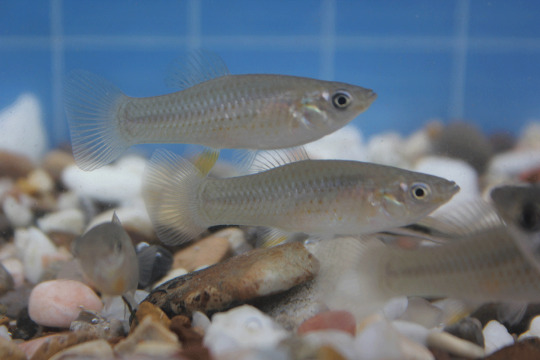
European Bitterling (Rhodeus amarus)
Ten-spined Stickleback (Pungitius pungitius)
Bluegill Sunfish (Lepomis macrochirus)
Guiana Leaffish (Polycentrus schomburgkii)
Least Darter (Etheostoma microperca)
Jewel Fish (Hemichromis bimaculatus)
Mouthbreeding Fish (Tilapia macrocephala)
Grayling (Thymallus thymallus)
Common Whitefish (Coregonus lavaretus)
Char (Salmo alpinus)
Observed Homosexual behaviour in Marine Mammals
There’s been recorded observed behaviour found in dolphins, whales, pinnipeds and manatees.
Amazon River Dolphin (Inia geoffrensis)
Only male homosexuality observed with sexual and affectionate behaviours including mating with three types of penetrative sex (anal, genital slit or blowhole). This behaviour is common in captive males but it is unknown if it also is common in wild populations.

Spinner (Stenlla longirostris) and Bottlenose Dolphins (Tursiops truncatus)
Orca / Killer Whale (Orcinus orca)
Orcas display primary male homosexual preference and behaviours such as courtship, affectionate, pair-bonding and sex in wild populations. They do not display these behaviours in captivity due to the lack of adequate care and not having their social needs met. These homosexual interactions have been found to be integral and important to the social life of male orcas.
Gray Whale (Eschrichtius robustus)
Bowhead Whale (Balaena mysticetus)
Northern Atlantic Right Whale (Eubalaena glacialis)
Northern Elephant Seal (Mirounga angustirostris)
Gray Seal (Halichoerus grypus) and Harbor Seal (Phoca vitulina)
Both these seals display common male and female homosexuality and courtship, sexual, affectionate and parenting behaviours displayed primarily both in the wild and captivity.

Australian Sea Lion (Neophoca cinerea)
New Zealand Sea Lion (Phocarctos hookeri)
Northern Fur Seal (Callorhinus ursinus)
Walrus (Odobenus rosmarus)
West Indian Manatee (Trichechus manatus)
Incirrate octopus (Incirrata)
Common Box Crab (Calappa lophos)
376 notes
·
View notes
Photo
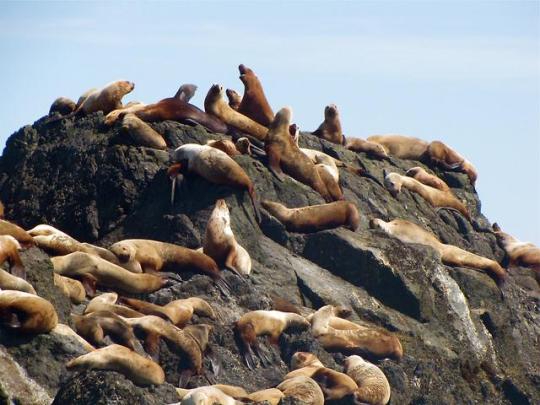
From Canadian Wildlife Federation Photo of the Day; June 11, 2018:
Northern Fur Seals (Callorhinus ursinus) near Ucluelet, British Columbia
Photographer: Judith Kennedy
2 notes
·
View notes
Photo

Arctic - Seals and Walrus 4″x4″ watercolor. 2014
by Zachary Melisi
Part of a school project on Arctic and Antarctic ecosystems.
Walrus (Odobenus rosmarus)
Fur Seal (Callorhinus ursinus)
Gray Seal (Halichoerus grypus)
#circle#painting#traditional art#art class#ecosystem#biology#animal#mammal#watercolor#walrus#seal#fur seal#gray seal#sea mammals#tusks#Arctic#wildlife
3 notes
·
View notes
Text
In all three of these eared seals, significant proportions of the population do not breed.
"Biological Exuberance: Animal Homosexuality and Natural Diversity" - Bruce Bagemihl
#book quote#biological exuberance#bruce bagemihl#nonfiction#eared seal#australian sea lion#neophoca cinerea#new zealand sea lion#phocarctos hookeri#northern fur seal#callorhinus ursinus#nonbreeding
0 notes
Photo

Морские котики спят в воде с одним открытым глазом.
Большинство крупных животных во время сна испытывают, среди прочих, так называемую медленноволновую фазу сна (глубокий сон). В это время частота электромагнитных волн, регистрируемая на энцефалограмме, снижается, а организм и мозг, как считается, восстанавливаются после дневных нагрузок.
У ряда видов ситуация со сном более сложная. Например, дельфины, некоторые другие китовые и некоторые ластоногие, по всей видимости, спят по очереди разными полушариями. «По всей видимости» относится к тому факту, что достоверно изучить их сон в воде часто очень сложно — в естественных условиях снять у них энцефалограмму крайне затруднительно, а в искусственных лабораторных условиях их поведение часто бывает не вполне естественным.
Авторы новой работы изучали четырех молодых северных морских котиков (Callorhinus ursinus), выловленных на Командорских островах и не менее года проведших в неволе — в лабораторном бассейне Института проблем экологии и эволюции имени А.Н. Северцова. Биологи смогли закрепить на них оборудование электроэнцефалографии таким образом, чтобы не мешать им спать в позициях, типичных для котиков во время сна в воде на воле.
Смотрите также: И во сне не снилось. Разбираемся в исследованиях сна
Ученые выяснили, что морские котики в воде испытывают длительные периоды однополушарного медленноволнового сна. В это время одно полушарие поддерживает электрическую активность с низким уровнем напряжения (это признак бодрствования), в то время как другое полушарие показывает медленноволновую активность, типичную для сна. Ранее такие же типы активности регистрировали у некоторых птиц.
К сожалению, половина из обследованных морских котиков во время сна располагались «на боку», так что был виден лишь один их глаз — обращенный вверх. Однако две из четырех особей во сне плавали иначе — так, что было видно сразу оба их глаза.
Схематическое изображение того, как спят морские котики, и снимки тех особей, которых удалось зафиксировать спящимиLyamin et al. / PLOS One
Оказалось, что глаз, противоположный полушарию без медленноволнового сна, четверть всего времени однополушарного медленноволнового сна (при котором бодрствует не то полушарие, что управляет им, а противоположное) остается открытым. Может показаться, что он был открыт только четверть времени — это немного. Но на деле, как отмечают исследователи, глаз все это время не закрывался дольше, чем на несколько секунд.
Возникает вопрос, в чем биологический смысл такого сна. Ученые отмечают, что на суше морские котики спят нормально, и фаза медленноволнового, глубокого сна у них протекает одновременно для обоих полушарий. В то же время в воде все наоборот.
Можно предположить, что причина столь разного поведения в том, что на суше морского котика некому атаковать. Теоретически во время гона на котика может напасть его сородич того же пола, но такая агрессия часто носит символический характер и не заканчивается каким-либо большим вредом. А вот в воде на котика из глубины могут нападать и косатки, и крупные акулы. Очевидно, здесь держать один глаз открытым во время сна гораздо важнее.
В то же время нельзя сказать, что морские котики все время не спят одним из двух полушарий. Как отмечают авторы, фаза быстрого сна у обоих полушарий этих животных протекает одновременно даже во время сна в воде. Во время этой фазы появляются, как правило, наиболее яркие сновидения. И именно тогда морской котик не отслеживает одним глазом ситуацию на глубине. По всей видимости, сложности адаптации к однополушарному быстрому сну оказались слишком велики, чтобы на них имело смысл идти. Правда, быстрый сон по времени занимает меньше, чем медленноволновой, да и пробуждение из него происходит быстрее.
http://bit.ly/2EtrSrv
0 notes
Text
Tuesday, June 20th
Before we could even leave the dock, deckhand Kyndace pointed out a Black-crowned Nightheron (Nycticorax nycticorax) hiding under the wharf next to our boat.
The morning started out foggy, but with very little wind. Small swells and wind waves made the passage fairly smooth as we struck out in a northerly direction. Not too long into the trip, we reached a scattered pod of Pacific White Sided dolphins (Lagenorhynchus obliquidens). They were racing along in groups of 5-7, upwards of 150 animals total! The dolphins darted back and forth, covering about half a mile in either direction of our boat. We spent a few minutes watching them play around us, then continued in search of whales. We passed at least 6 Northern Fur Seals (Callorhinus ursinus) on our voyage.
After some time, we saw a single spout and came alongside a slow traveling humpback whale (Megaptera novaeangliae). We traveled with it for some time and got our first whiff of whale breath! For those of you who haven’t had the pleasure yet, it’s a bit like rotten broccoli.
That was when we got news of a group of lunge feeding humpback whales ahead of us. We said farewell to the lone whale and travelled on.
Before we could even spot the whales, we could tell where they were by the huge group of birds in the area. Hundreds of Sooty Shearwaters (Ardena grisea) were sitting on the ocean surface. These pelagic sea birds feed on krill (a small type of shrimp), fishes and the occasional jelly. They’re common off our coast right now and spend the boreal winter off the coasts of Chile, Australia, and New Zealand. Days like this we can use the Shearwaters to search for whales, since they both enjoy a diet of krill and small fish while in the bay.
Then we were among the whales.
A lunge feeding humpback is an incredible sight. They rise up through the surface with their mouths gaping wide, their ventral pleats (folds in the skin that allow the mouth to expand like an accordion) distended, throats billowing out. We could see into their mouths! The short black plates of baleen were clearly visible, as was the bright pink of the palate.
Our deckhand Kyndace has a sharp eye and pointed out that the clouds of krill were actually visible near the surface. We looked straight down into the water and saw the massive red cloud of the small shrimp. The krill being close to the boat brought the whales in close as well. Soon we could hear their excited trumpet blows as they lunged right next to us!
We spent as much time as we could enjoying this incredible opportunity. Most often, the whale’s prey is out of sight below the surface. We can only imagine how these enormous animals are able to feed themselves, though Cascadia Research Collective is making good headway in that area.
Their researchers have placed cameras on the humpbacks-holding them in place with suction cups! So far, the results have been astounding. We at Monterey Bay Whale Watch are happy to collaborate by sharing photos for identification purposes. The company owner, marine biologist Nancy Black, has been assisting with the photoidentification effort for close to 30 years!
Of course, all good things must end. We finally ran out of time and had to make our way home, happy to have experienced something that few people get to enjoy.


Top: Black-crowned Nightheron hiding under the wharf
Bottom: Humpback feeding frenzy right next to our boat!
#mbww#monterey bay whale watch#Whale Watching#gowhales#humpback whales#lunge feeding#pacific white sided dolphin#black crowned night heron#Northern fur seal
2 notes
·
View notes
Text
Species and Community Focus: Northern Fur Seals & Steller Sea Lions on St. Paul
In preparation for my upcoming trip to St. Paul (one of the Pribilof Islands in the Pacific, not the capital of Minnesota), I’ve been doing some research on the species that are utilized on the island - northern fur seals (aka Callorhinus ursinus, or laaqun in Unangan) and Steller sea lions (aka Eumetopias jubatus or qawan in Unangan).
Photo: Northern fur seals (left) and Steller sea lions (right) Credit: NOAA Alaska Fisheries Science Center

Both of these species are in the family Otariidae, which means ‘eared’ seals. If you remember back from the International Day of the Seal post, there are ‘eared’ seals and ‘true’ or ‘earless’ seals (phocids), including harbor and ice seals. Otariids like fur seals and sea lions have visible ear flaps (you can see them if you look closely at the photo above, especially for the fur seals). Additionally, otariids differ from phocids in that they have a longer, more flexible neck, longer front flippers, and can use their hind flippers to help them move easily on land. Check out this video from the Smithsonian that highlights some of these differences. Otariids are also sexually dimorphic, which means that the males are larger than the females (see the size difference in the large adult male in the center of the sea lion photo above compared to the smaller females and juveniles below him). This is important with respect to breeding, as males establish territories that they defend and mate with females within their territory. Both species form rookeries on land where they congregate and breed each year. Male Steller sea lions will even fast the entire time they are defending their territory (working on their beach bodies!).
Photo: Northern fur seal rookery on Bogoslof Island, Alaska. Credit: NOAA Alaska Fisheries Science Center
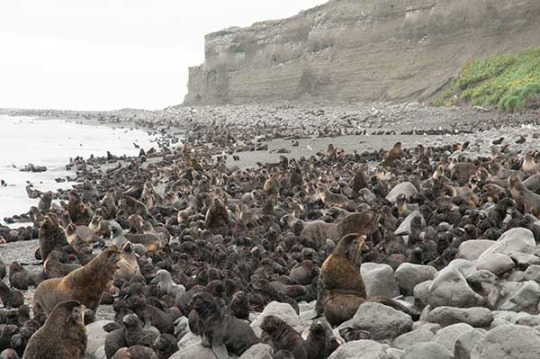
Other than being similar to each other physically and behaviorally, these two species are also the two primary marine mammal species that are harvested by the Aleut Community of St. Paul Island (ACSPI) for subsistence purposes. The ACSPI (and the Aleut Community of St. George Island) are the only groups that harvest fur seals, and this is done in a unique way that differs from other seal species. In working with my Steering Committee members from St. Paul, I’ve learned that to ‘hunt’ and to ‘harvest’ do not mean the same thing. According to the National Marine Fisheries Service, ‘hunting’ refers to the taking of seals using firearms, whereas ‘harvesting’ refers to the organized herding and driving of groups of seals from hauling groups to inland areas where the seals are stunned and exsanguinated (drained of blood). Fur seals are harvested and Steller sea lions (and most other marine mammal species) are hunted.
Photo: St. Paul in relation to Anchorage - a 3.5 hour flight, if the weather cooperates. Flight are usually only on Wednesday, Friday, Saturday, and Sunday

For almost two centuries, fur seals on St. Paul were harvested for their furs. Initially uninhabited, St. Paul was populated with Aleuts forcefully taken from their homes in Atka, Unalaska, and Siberia once the rookeries were discovered by Russian fur traders in 1786. The primary purpose of populating the island was to harvest the furs seals for the fur market - there was no other economy or means of making a living. Even once Alaska was purchased by the US in 1867, private sealing leases continued on the island until the Fur Seal Treaty of 1911, by which time millions of fur seals had been harvested for their pelts. When World War II hit, Aleuts living in the Pribilofs were evacuated to Southeast Alaska. At the end of commercial fur seal harvest in 1985, following amendments to the Fur Seal Act in 1983, the Aleut community on St. Paul has adopted harvesting fur seals for subsistence purposes. The island has also taken on new life as a fishing port in the Central Bering Sea, processing halibut and other fish, and draws a number of tourists interested in the numerous nesting sea bird populations.
Photo: A Horned Puffin (left) and a Parakeet Auklet (right) on St. Paul Island Credit: Marc Roman, from USGS website

The ACSPI co-manages both fur seals and Stellar sea lions with National Marine Fisheries Service through a co-management council. If the weather cooperates and I make it to the island on time, I will be able to attend a council meeting next week and see co-management in action! Stay tuned the next few weeks on updates from the trip and hopefully a lot of fun photos!
0 notes
Photo
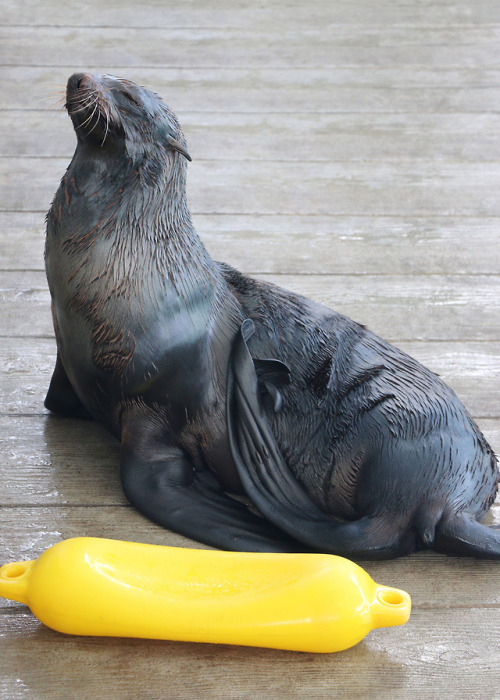
Ursula the northern fur seal (Callorhinus ursinus) grabs a quick...
0 notes
Photo

Northern fur seals (Callorhinus ursinus) have the some of the densest fur in the animal kingdom (second only to the sea otter). They're also champion snoozers. 💤 — view on Instagram https://ift.tt/2NwFU09
115 notes
·
View notes